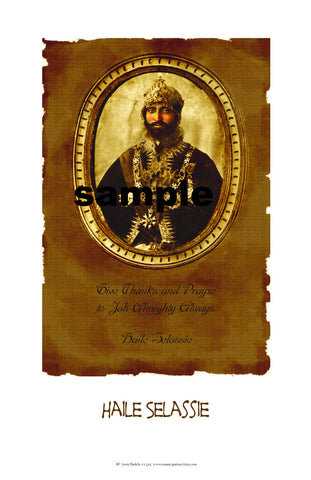Islam in America #1541
$ 8.00
Caption from poster__
Islam in America
In the name of Allah, The Beneficent, The Merciful
Muslims have been part of American history since pre-Columbus times.
Indeed, early explorers used maps that were derived from the work of
Muslims, with their advanced geographical and navigational information
of the time. Some scholars estimate that 10-20 percent of the slaves
brought over from Africa were Muslims. The film "Amistad" alluded to
Indeed, early explorers used maps that were derived from the work of
Muslims, with their advanced geographical and navigational information
of the time. Some scholars estimate that 10-20 percent of the slaves
brought over from Africa were Muslims. The film "Amistad" alluded to
this fact, portraying Muslims aboard this slave vessel trying to perform
their prayers, while chained together on deck as they crossed the
Atlantic.Personal narratives Omar Ibn Said (ca. 1770-1864) was born
in the Muslim state of Futa Toro in Western Africa, in present-day
Senegal. He was a Muslim scholar and trader who was captured and
enslaved. He arrived in South Carolina in 1807, and was soldto James
Owen of North Carolina. Sali-Bul Ali was a slave on a plantation. His
owner James Cooper wrote: "He is a strict Mahometan (sic); abstains
from spirituous liquors, and keeps various fasts, particularly that of the
Ramadan..." Lamen Kebe was a slave who used to be a school teacher
in Africa. He shared information about the texts and teaching methods
used in the Islamic schools of his country. Abdul Rahman Ibrahim Sori
spent 40 years in slavery before he returned to Africa to die. He wrote
two autobiographies, and signed a charcoal sketch of himself by Henry
Inman, which was featured on the cover of "Freedman's Journal" and is
on display in the Library of Congress. Many of the Muslim slaves were
encouraged or forced to convert to Christianity. Many of the first-generat-
ion slaves retained much of their Muslim identity, but under the harsh
slavery conditions this identity was largely lost
Most people, when they think of African-American Muslims, think of the
Most people, when they think of African-American Muslims, think of the
"Nation of Islam." Certainly, there is an historical importance to how Islam
took hold among African-Americans, but we will see how this initial intro-
duction transformed in modern times. Among the reasons why African-
Americans have been and continue to be drawn to Islam are 1) the Islamic
heritage of West Africa from where many of their ancestors had come; and
2) the absence of racism in Islam in contrast to the brutal and racist enslave-
ment they had endured. In the early 1900s, a few black leaders strived to
help the recently-freed African slaves regain a sense of self-esteem and
reclaim their heritage. Noble Drew Ali started a black nationalist community,
the Moorish Science Temple, in New Jersey in 1913. After his death, some
of his followers turned to Wallace Fard, who founded the Lost-Found Nation
of Islam in Detroit in 1930. Fard was a mysterious figure who declared that
Islam is the natural religion for Africans, but did not emphasize the orthodox
teachings of the faith. Instead, he preached black nationalism, with a
revisionist mythology explaining the historical oppression of the black
people. Many of his teachings directly contradicted the true faith of Islam.
In 1934, Fard disappeared and Elijah Muhammed took over the leadership
of the Nation of Islam.Fard became a "Savior" figure, and followers be-
lieved that he was Allah in the flesh on earth. The poverty and racism
rampant in the urban northern states made his message about black
superiority and "white devils more widely accepted. His follower
Malcolm X became a public figure during the 1960s, although he
separated himself from the Nation of Islam before his death in
1965. Muslims look to Malcolm X (later known as Al-Hajj Malik
Shabaaz) as an example of one who, at the end of his life, rejected the
racially-divisive teachings of the Nation of Islam and embraced the true
brotherhood of Islam. His letter from Mecca, written during his pilgrimage,
shows the transformation that had taken place. As we shall see shortly,
most African-Americans have made this transition as well, leaving behind
the "black nationalist" Islamic organizations to enter the worldwide brother-
hood of Islam.




